A Comprehensive Guide to Identifying Bird Sounds
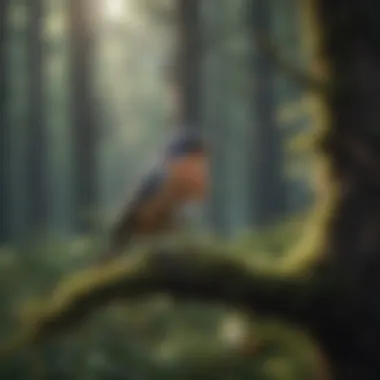
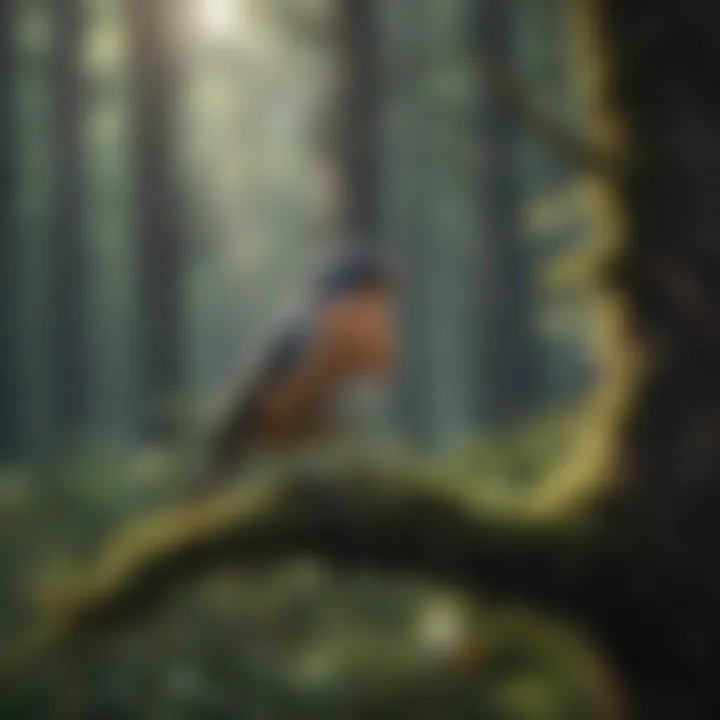
Intro
Understanding bird sounds is more than just hearing a song or a squawk; it's about unlocking a whole world of avian communication. The chirps, whistles, and caws that fill the air provide rich insights into the lives of birds. As we learn to identify these sounds, we not only deepen our appreciation for nature but also develop a unique connection with the feathered creatures that surround us. From a simple morning melody to the subtle calls of a hidden species, each sound carries meaning and context.
In this guide, we will unpack the various methods for recognizing bird calls and songs. For many, the process can be overwhelming. But with the right techniques, tools, and a bit of patience, anyone can tune in to this natural orchestra.
Let's dive into the rewarding journey of bird sound identification, which promises to enhance both your knowledge and your experience in the great outdoors. Here's what to expect in the sections that follow:
Understanding Bird Sounds
Bird sounds play a crucial role in the avian world, serving as a form of communication, a mating call, or even a warning system. Understanding these sounds can bring immense value, particularly for those who are passionate about bird watching or own pet birds. Knowing how to identify and interpret these sounds not only enhances the experience of observing birds but also fosters a deep connection with nature. It can help you understand the behaviors and needs of birds in your vicinity or the birds in your care.
By diving deep into the nuances of bird vocalizations, one can reveal a myriad of fascinating insights into their lives, from courting rituals to alarm signals. For pet bird owners, recognizing various sounds is essential as it may indicate their bird's needs or emotional state. It’s fair to say that understanding bird sounds is not just about appreciating their beauty, it’s about enriching the interaction one has with them.
Defining Bird Sounds
Bird sounds encompass a broad range of vocalizations, each serving its own purpose. Generally, bird sounds can include everything from the pleasant melodies of songs to the more abrupt calls that signify alarms or distress. Understanding the definitions of these sounds can set the groundwork for diving into the more intricate aspects of bird sound identification.
Types of Bird Sounds
Bird sounds generally fall into several categories, each playing a unique role in avian life. Here are key types:
- Calls: These are short, simple vocalizations that birds produce frequently. Calls serve various purposes, from establishing social bonds to signaling location to flock mates. A distinctive characteristic of calls is their brevity and frequent occurrence. In this article, focusing on calls is beneficial since they are often the first sounds new bird enthusiasts might learn to differentiate. Calls can be quite varied depending on species and situation, making them relatively easy to recognize with some practice.
- Songs: Bird songs are more elaborate sequences that typically occur during mating rituals or to establish territory. Songs tend to be longer and involve a melodious quality that can captivate audiences. The primary allure of focusing on songs in this article lies in their beauty and complexity. Songs often vary by season, with distinct patterns occurring during the breeding period. However, the downside may be their variability depending on geographical locations, which can complicate song identification for beginners.
- Alarm Calls: These vocalizations act as warning signals, alerting other birds to potential threats, such as predators. Alarm calls are often sharp and sudden, allowing for quick communication among birds in a flock. The key feature of alarm calls is their urgency, which sets them apart from other sounds. Focusing on alarm calls in this guide proves to be invaluable because they provide immediate insights into the environmental challenges birds face. Yet, the wide array of alarm calls can make it difficult for new bird enthusiasts to master their recognition.
- Juvenile Calls: As young birds learn to vocalize, they produce calls that can differ significantly from those of adults. These early vocalizations often serve as a form of communication with parents and can indicate hunger, discomfort, or the need for protection. The distinctive trait of juvenile calls is their often less developed or varied nature, which marks them as unique in the bird sound landscape. Although identifying juvenile calls can present a challenge, doing so can deepen understanding of the growth and development of young birds, certainly a rewarding endeavor for any bird enthusiast.
Understanding these varied vocalizations enriches the experience of bird watching and pet bird ownership, fostering a personal bond with these feathered companions.
By gaining insights into the types and functions of bird sounds, both novice and experienced bird lovers can learn to identify these fascinating vocalizations with greater accuracy and appreciation.
Furthermore, mastering these foundational elements can pave the way to a rewarding birder experience, ensuring a seamless and fulfilling connection with the world of our avian friends.
The Purpose of Bird Sounds
Understanding bird sounds goes beyond mere recognition and appreciation; it digs into the heart of avian communication and behavior. Various sounds serve distinct purposes, and knowing these can significantly enhance one’s interaction with birds, whether in nature or in pet care. From signaling alarm to attracting a mate, every chirp and whistle carries weight, conveying rich information essential for survival and social structure.
Communication Among Birds
Birds, with their unique vocalizations, communicate more than you'd think. Each sound can convey a multitude of messages depending on the context. For instance, in a bustling park filled with lively chatter, a common crow might caw to establish dominance or alert its peers about a potential threat.
- Flocks relying on calls: During migration, flocks of geese utilize honks to maintain cohesion. Their continuous sounds ensure that all members remain aware of their whereabouts, preventing disorientation in the vast skies.
- Diverse dialects: Some species develop regional dialects that can help with identification. Chickadees, for example, have been shown to modify their calls depending on their habitat, enhancing communication with nearby birds.
Understanding this level of communication allows bird enthusiasts to appreciate the nuances of interactions among different species. It connects them to a larger ecological web, emphasizing the importance of monitoring and understanding the avian world.
Territorial Marking
Territorial calls play a pivotal role in how birds establish and defend their domains. A common mockingbird, with its rich and varied repertoire, can often be heard in the early morning sun, asserting ownership over its territory. This not only serves as a warning to potential intruders but also advertises to mates that a suitable nesting site is available.
- Sound as a deterrent: The phrase "loud and proud" rings true here. When another bird encroaches, the mockingbird intensifies its singing. The louder and more diverse the vocalization, the more compelling the claim to the territory.
- Visual cues: Often, these auditory signals are accompanied by visual displays, like puffed feathers or aggressive flying. This dual-mode of communication reinforces their assertion and minimizes physical confrontations.
Recognizing these territorial markers is essential not only for birdwatching but also for fostering a deeper understanding of ecological dynamics.
Mating Calls
When it comes to attracting a mate, the significance of bird sounds reaches astronomical heights. Each species has developed specific calls and songs that play a crucial role in courtship rituals. Take the lyrebird, for instance; it integrates sounds not just from its own species but imitates others from its environment, creating an elaborate and mesmerizing performance to woo potential partners.
- Sound appeal: The quality and complexity of a song can often indicate the fitness of a bird. Potential mates listen carefully; a bird that can produce a rich, intricate song is often perceived as healthier and more desirable.
- Integrating signals: During the breeding season, males usually dominate the soundscape. They often call preferentially around dusk or dawn, maximizing the chances of attracting a mate while signaling to rivals to keep their distance.
These mating calls not only demonstrate the beauty of avian vocalizations but are also vital for ensuring the continuation of species. They serve as a window into the complex world of bird behavior and evolution.
Understanding the purpose of bird sounds is a gateway to deeper engagement with the natural world.
Navigating the layers of communication, territorial claims, and romantic overtures depicted in these sounds transforms every birdwatching outing into an enriching learning experience. For pet bird owners and enthusiasts alike, grasping these aspects of avian life becomes a key to not only identification but to building an organic, respectful relationship with these fascinating creatures.
Methods for Identifying Bird Sounds
Identifying bird sounds is a skill that can significantly enhance a person's connection to nature. Understanding the various methods for identifying these sounds provides bird watchers, pet bird owners, and enthusiasts a well-rounded toolkit. Each method offers unique insights and caters to different levels of experience. Grasping these techniques not only enriches bird-watching experiences, but also improves engagement with avian species.
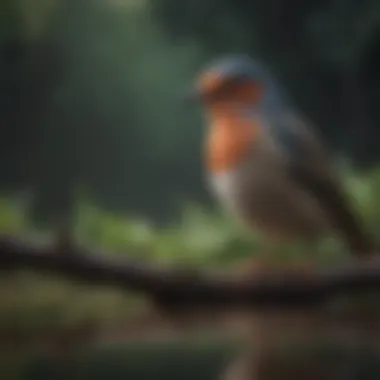
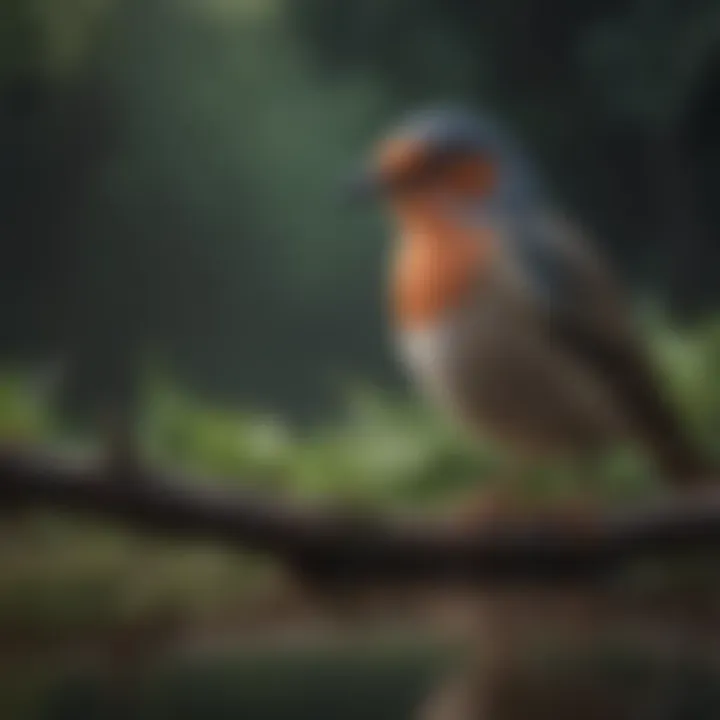
Observation Techniques
Using Binoculars
Using binoculars during birdwatching is often the first step for many enthusiasts. The ability to observe birds closely can lead to better sound identification. This method enables an observer to catch the subtle movements and behaviors, which complement auditory clues. For instance, seeing a bird bobbing its head can often coincide with its call, offering context that pure listening cannot provide.
One key characteristic of binoculars is their ability to magnify distant objects. This makes them an invaluable tool when observing shy or elusive birds in their natural habitat. They are a popular choice because they are portable and relatively easy to use. However, it is crucial to select binoculars with good quality optics to avoid distortion, which can detract from the experience.
A disadvantage could be the dependency on light conditions, as poor lighting can impair visibility. Observers must also be careful not to lose the bird while fiddling with equipment. In essence, binoculars can enhance the bird identification process significantly, but they require a bit of practice to master.
Visual Identification
Visual identification focuses on recognizing features such as color, size, and shape of the birds themselves. This approach pairs harmoniously with listening as some bird songs may have visual cues that reinforce the auditory experience. A distinctive plumage can signify specific species; hence, knowing the visual traits of common birds in the area aids in quick identification.
The key characteristic of visual identification is that it provides more context to the sounds a bird makes. For example, the solid correlation between a species' call and its coloration might make it easier to identify the bird more reliably.
While this method is advantageous since it can be done easily without additional tools, it sometimes presents challenges—especially in dense foliage where visibility is limited. Moreover, it requires a foundational knowledge of different species. The key to success lies in honing observation skills, making it a rewarding method for bird enthusiasts.
Audio Recordings
Field Recording Equipment
Field recording equipment plays a pivotal role when it comes to capturing the intricate sounds made by birds. This can include anything from handheld recorders to specialized microphones that filter background noise, focusing solely on bird calls. Such devices allow bird watchers to gather data that can be reviewed later, making it easier to identify sounds they may have missed in the moment.
A major advantage of using quality field recording equipment lies in its specificity. It can capture frequencies of sounds that human ears may not even detect. The recordings can also be analyzed to pinpoint species, providing clarity amidst the buzz of nature.
However, these tools can be complex and require some technical know-how. Additionally, there’s the matter of battery life and the need for storage capacity, especially when recording lengthy sessions. Yet, once familiar with the gear, the ability to record and analyze bird sounds can profoundly enhance bird sound identification.
Sharing and Analyzing Sounds
Sharing and analyzing sounds with others is a crucial step in the bird sound identification process. Platforms such as forums and social media outlets provide spaces for enthusiasts to post their recordings and seek help in identifying bird sounds. Connecting with a community engaged in this practice opens doors to collective knowledge and experience.
A key characteristic of this method is the learning potential it offers. When multiple eyes and ears are at work, the chances of accurate identification increase. Furthermore, many audio sharing platforms include databases that allow users to browse sounds by region, species, or call type, creating an enriching learning space.
On the flip side, relying solely on the community may lead to misidentification due to differing opinions. Additionally, while sharing sounds allows for interaction, it might expose users to varying levels of expertise, which can be daunting for beginners. Still, the process fosters a sense of community and belonging among those who appreciate bird sounds.
Apps and Technology
Smartphone Apps for Bird Identification
Smartphone apps designed for bird identification have gained popularity in recent years. These apps provide users with extensive databases of bird calls and songs that can be accessed anytime. Thanks to user-friendly interfaces, bird watchers can play a recording and compare it to sounds in their vicinity.
The key advantage of these apps is their convenience. With just a few taps on your smartphone, you can access thousands of bird sounds. Many apps even offer features for visual identification, making it a versatile tool for hobbyists.
However, a potential downside is the reliance on mobile battery life, which can be a nuisance during long excursions. Additionally, while these apps provide a foundation for identifying calls, they may not always have the most local or specialized birds due to regional databases. Nevertheless, these apps serve as an essential tool for aspiring bird parents and enthusiasts alike.
Online Resources and Databases
Online resources and databases serve as comprehensive repositories for both novice and experienced bird watchers. Websites often contain a wealth of information on various bird species, including sound libraries, articles, and user-generated content that enhances understanding.
An essential aspect of these databases is the depth of information they offer. Users can often find recordings categorized by bird behavior, such as feeding or nesting calls, which helps contextualize the sounds. This robust research potential can greatly aid in identification efforts.
On the flip side, the sheer volume of information can be overwhelming. Users may find it challenging to navigate or discern the best resources amid the plethora of options available. Filtering through such resources may require positive patience. That said, well-curated databases can serve as an incredible aid for anyone passionate about birds.
Challenges in Bird Sound Identification
Identifying bird sounds can be a delightful yet challenging pursuit. The ability to discern various calls and songs is both an art and a science. Bird sounds can drastically vary based on environmental factors, species similarities, and seasonal changes. For bird enthusiasts, being aware of these challenges can refine their skills and heighten their appreciation of the avian world.
Environmental Factors
Habitat Variability
Habitat variability refers to the differences in environments that birds inhabit, which can lead to distinct sounds. A bird’s call might sound different in a dense forest compared to an open field. This variability can sometimes mask or alter the sounds, making identification tricky. For those keen on birdwatching or ornithology, understanding these differences is vital.
The key characteristic of habitat variability is that it influences how sound travels. In thick woods, sounds may bounce and become distorted, while in open areas, clarity increases. This attribute is prominent in our understanding of bird calls and songs as it acts as a canvas for different auditory experiences.
Unique features come into play here, such as the echoes created by various terrains, which can lead to confusion in identification. If someone is recording sounds in a foliage-laden area, they might not recognize the distinct call of a bird due to overlapping sounds from other species or natural background noise.

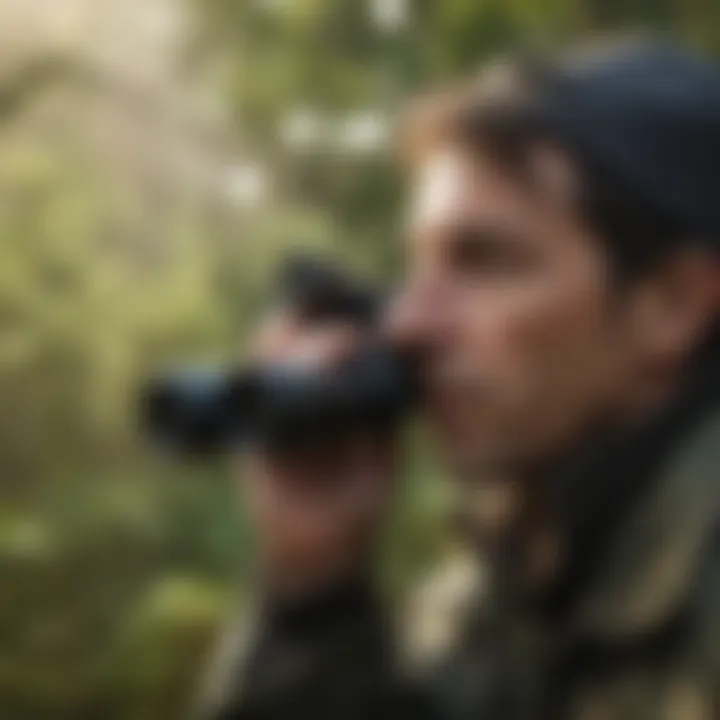
Background Noise
Background noise can be a significant barrier in identifying bird sounds. Urban environments, for instance, introduce mechanical and human sounds that can drown out the calls of birds. Likewise, natural background sounds, like wind blowing or water flowing, can overlap with bird calls, making it hard to distinguish one sound from another.
The vital characteristic of background noise is its omnipresence, especially in areas populated by humans. Bird watchers often need to find quiet spots to accurately listen to bird calls. In many ways, learning to tune out these distractions is essential for successful bird sound identification.
While background noise can obscure sounds, it can also teach bird enthusiasts about a bird’s resilience in adapting their calls to communicate effectively amid the clamor.
Species Similarity
Look-Alike Species
Look-alike species refer to birds that appear similar but have distinct calls. For example, the American robin and the hermit thrush look alike but have different sound patterns. This similarity can pose challenges for bird identification, especially for novices. They may find themselves misidentifying birds simply because they look similar.
The crucial feature of look-alike species is their visual and auditory similarities that can deceive even seasoned watchers. Understanding the unique calls of each can significantly enhance one’s bird identification skills, ensuring clarity in the field.
For those deeply invested in bird sound identification, these nuances can be advantageous when creating mental maps of what they have observed and heard. It illustrates how intricate nature's tapestries can be, emphasizing the importance of both sight and sound in observing wildlife.
Similar Sound Patterns
Various bird species often share similar sound patterns, making identification even more complex. For example, a finch call might sound somewhat like that of a sparrow. This overlap in calls can confuse listeners, especially when they are not familiar with the distinct features of each bird’s vocalizations.
The key characteristic here is the way these calls blend into each other, creating a symphony of sounds that can mislead even the most astute listeners. Knowing the context of when and where a call occurs can aid in narrowing down the possibilities and facilitating correct identification.
Unique features of similar sound patterns include variations in pitch and rhythm that might be subtle but are crucial to accurate identification. Bird watchers can benefit from recording and replaying these sounds, allowing them to train their ears to pick up on these nuances over time.
Seasonal Changes
Breeding Seasons
During breeding seasons, birds often alter their calls. Males might sing more intensely to attract females, resulting in unique patterns that are not commonly heard at other times of the year. This period often presents new angles for bird sound identification that weren't previously accessible, as songs become richer and more varied.
Breeding seasons are pivotal because they highlight vocal variations that characterize species’ territorial behaviors. This increase in activity offers bird enthusiasts a chance to learn and document changes, aiding in advancing their understanding of how sounds correlate with behavior.
A potential disadvantage during this time is the sheer volume of sounds, which may create a cacophony, making it difficult to hone in on one particular species unless one is keenly focused on observation.
Migration Patterns
Migration patterns also significantly affect bird sounds and identification. As birds migrate, they may adopt different calls influenced by their surroundings or the group dynamics during flight. The mobile nature of migratory birds means that the sounds one hears can change drastically based on the season and location.
The unique feature of these patterns is the adaptation birds undergo to suit their environments. Migrating birds often rely on heightened social interactions that lead to distinct vocal expressions, complicating attempts to identify them solely based on sound.
While these changes enrich the auditory landscape, they can also disorient listeners who may struggle to pinpoint a specific bird when many are present. Identifying migration-related sounds takes practice and, most importantly, patience.
The Importance of Bird Sound Education
Understanding the sounds that birds make plays a crucial role in enhancing our experiences and interactions with avian life. Education in this area doesn’t just enrich our appreciation for these creatures, but opens doors to a greater understanding of their behaviors, environments, and even the ecosystems they inhabit. The subtlety in their calls and songs often tells stories that go far beyond simple communication; they reveal insights about territorial disputes, mating rituals, and social hierarchies.
Enhancing Bird-Watching Experiences
For many bird watchers, the thrill lies not just in spotting a bird but in recognizing its identity through sound. Imagine being in a dense, leafy park where the sun filters through the branches, and you hear the melodic trill of a common song sparrow. That sound transforms your visit from a mere walk into a deeply engaging experience. Learning bird calls can heighten the excitement of bird watching, allowing enthusiasts to recognize species even when they’re hidden from view.
- Listening closely provides clues. In a bustling nature reserve, identifying a wood thrush by its distinctive echoing call can be exhilarating. When observing these birds, note how their vocal patterns can change with their surroundings, adding another layer to the experience.
- Engagement increases with awareness. By understanding when certain calls are heard—such as the distinct high-pitched whistle of a white-throated sparrow in early spring—bird watchers can time their outings for optimal observation.
Educating oneself about bird sounds can foster anticipation and excitement and lead to capturing rare sightings as well as memorable encounters in nature.
Conservation Efforts
In terms of bird conservation, sound education holds significant weight. Many conservation initiatives rely on understanding bird populations and their behaviors, which can often be gauged through monitoring their calls. Engaging local communities and enthusiasts in learning to identify these sounds can lead to significant advancements in conservation efforts.
Bird listening exercises—like guided sound walks—encourage communities to engage with their local avian populations. This can lead to:
- Increased reporting of bird populations: Citizen science programs, where individuals report their sightings and sounds, give conservationists essential data to track species health.
- Awareness of endangered species: Educating the public about specific calls from endangered or threatened species helps raise awareness and fosters community support for their preservation.
Furthermore, some local organizations may conduct training sessions, promoting active listening practices and identifying the sounds of species in decline. This grassroots involvement not only contributes to conservation efforts but also builds a sense of community connection to the natural world.
Connecting with Nature


Bird sound education deepens our bond with nature and enriches our outdoor experiences. When we invest time in learning about the birds around us, we cultivate a deeper understanding of wildlife and its intricate web in the ecosystem. Sounds act as a lifeline to nature, leading us to identify when spring arrives by the chorus of returning birds or an alarm call signaling nearby predators.
- Creating serene environments: Focusing on the symphony of calls and songs can transform a chaotic day into a tranquil one, as we begin to appreciate the rhythm of life surrounding us.
- Mindfulness and presence: Engaging with bird sounds encourages individuals to practice mindfulness, fostering not only a sense of tranquility but also emotional well-being.
"The sounds of birds can ground us in the present moment, reminding us of the beauty that exists even in the smallest creatures."
In summary, education on bird sounds holds not just personal beauty but carries the implications for watching the environment around us closely and connecting on a deeper level with the intricate lives of our avian friends. It invites us, gently but persistently, to listen and learn, ultimately giving us tools to appreciate and protect the natural tapestry of life.
Practical Applications of Bird Sound Identification
Understanding how to identify bird sounds can have practical applications that extend far beyond mere hobbyist interest. The ability to discern and interpret avian vocalizations is not only rewarding but also enhances your interaction with nature and improves your relationship with pet birds. This section explores the various contexts in which bird sound identification is vital, particularly focusing on the benefits for pet bird owners, educational settings, and research endeavors in wildlife studies.
For Pet Bird Owners
Pet bird owners often find themselves contemplating the sounds their feathered companions produce. These vocalizations can reveal a great deal about their bird's state of mind and overall well-being. By tuning into these calls, owners can better understand what their pets might need or how they are feeling. For instance, a quick chirp might indicate excitement or curiosity, while a drawn-out squawk could suggest discomfort or distress.
Additionally, recognizing the nuances of a bird’s vocal outputs fosters stronger bonds between the pet and owner. Understanding specific calls can aid in addressing issues like boredom or anxiety, which is particularly important when considering a bird's mental enrichment. Here are some considerations to keep in mind:
- Behavioral Insights: Identifying distinct sounds can help pet owners ascertain their bird's mood, alertness, or need for social interaction.
- Vocal Training: Engaging with a pet bird through mimicry or sound games encourages learning. A bird may become more vocal as it learns to respond to its owner's voice or commands.
- Health Monitor: Sound changes can signify health issues. A previously chatty bird becoming quiet might raise alarms about its health needs.
In Educational Settings
Bird sound identification plays a crucial role in educational contexts, particularly in biology and environmental science courses. Instruction that includes auditory learning promotes a more rounded understanding of ecology and animal behavior. Schools and educational organizations can use bird sounds as a springboard for various lessons, thereby encouraging students to connect audio cues with specific species.
Consider the following advantages:
- Enhancing Learning Experience: Integrating bird sounds into lessons leads to a more immersive experience for students, making subjects like ornithology and ecology engaging.
- Practical Applications: Students can conduct field studies, using sound identification to map the presence of different bird species in local areas, applying their classroom knowledge in real-world scenarios.
- Promoting Conservation Awareness: Understanding bird sounds creates a deeper appreciation for biodiversity and the necessity for habitat preservation, inspiring students to advocate for environmental stewardship.
In Research and Wildlife Studies
The capacity to identify bird sounds is crucial for researchers who study ecosystems and biodiversity. Monitoring bird calls is a non-invasive method used widely in wildlife studies. Researchers often deploy recording equipment in various habitats to gather data on avian populations and distributions. Here’s how bird sound identification plays into research:
- Data Collection: Bird songs and calls provide significant insights into population dynamics, breeding behaviors, and habitat use. This information can enhance conservation strategies and inform policies aimed at protecting bird populations.
- Assessing Ecosystem Health: Changes in bird call frequencies might signal shifts in ecosystem stability. Higher species diversity often correlates with a richer and healthier environment.
- Longitudinal Studies: Regular acoustic monitoring allows scientists to track changes over time, offering critical clues about the impacts of climate change and human interference on avian communities.
"Bird vocalizations serve as a mirror reflecting the health of their environment, offering insights that extend far beyond mere aesthetics."
Future Trends in Bird Sound Identification
The landscape of bird sound identification is continually evolving, driven by technological advancements and an increasing communal interest in avian life. Understanding these future trends is pivotal for bird watchers, conservationists, and even casual enthusiasts who want to connect more meaningfully with the natural world around them. As we look forward, two critical elements emerge: advancements in technology and growing community engagement.
Advancements in Technology
Artificial Intelligence in Sound Recognition
One of the most significant shifts in bird sound identification comes from the application of artificial intelligence (AI). With its ability to analyze vast amounts of data, AI has revolutionized how we recognize and classify bird sounds. The key characteristic of AI in this context is its capability to learn from examples, becoming better at identifying specific bird calls and songs over time.
An example would be the software that can compare recorded sounds with a database of known calls, ensuring quick and accurate identification. This aspect makes AI a beneficial choice for enthusiasts aiming for precision in their observations. Using AI reduces the chances of human error, which can be common when identifying similar-sounding birds.
However, variants exist here. While traditional methods may leave room for subjective interpretation, an AI system's impartiality offers a clearer path. On the flip side, potential disadvantages include the reliance on technology that might not always match the nuanced understanding of experienced bird watchers. Indeed, AI-enhanced tools sometimes struggle with context.
Interactive Sound Libraries
Another advancing front is the development of interactive sound libraries. These online platforms allow users to explore a wide range of bird sounds, often featuring filters by location, habitat, and bird species. The key feature of these libraries is interactivity—users can listen to recordings, learn about the origins of each call, and even engage in community discussions. They offer a popular choice for both learning and identifying, making them accessible to everyone from novices to seasoned ornithologists.
A unique aspect of interactive sound libraries is their growing integration with mobile applications. Many users can easily access these resources on the go, facilitating bird sound identification while in the field. One downside, however, is that they can be overwhelming, given the sheer volume of sounds available. At times, this could lead to confusion for beginners trying to correlate what they hear in the wild with an extensive online library.
Growing Community Engagement
Crowdsourced Sound Identification
Crowdsourced sound identification is taking the field by storm. This trend involves the participation of numerous individuals in the collection and identification of bird sounds. The key characteristic here is its collective approach—engaging users to submit their recordings and participate in identifying songs, creating a large-scale collaborative effort. It's quite a beneficial method for expanding the database of bird sounds, as community contributions can cover diverse geographical regions that a single researcher or group may overlook.
Unique to crowdsourced identification is its democratizing effect. Anyone with an interest can contribute, enriching the community's knowledge base. However, a significant concern could be the quality control of these contributions. Without a rigorous vetting process, there might be inaccurate identifications, which can mislead new learners.
Educational Initiatives
Finally, educational initiatives are fostering a more profound appreciation for bird sounds among the public. Many organizations are developing programs aimed at teaching sound recognition through workshops, field trips, and online courses. The main characteristic of these initiatives is their structured, hands-on approach, which caters not just to seasoned birdwatchers but also engages newcomers eager to learn. This makes them a valuable choice for fostering interest in ornithology.
A notable aspect is that these initiatives often incorporate both fieldwork and technology, teaching users how to utilize smart apps while also grounding them in traditional methods of sound recognition. However, they can also present challenges. Not all people have access to such programs, which could lead to gaps in bird sound literacy among various communities.
The future of bird sound identification rests on technology, community engagement, and sustained educational efforts. As we embrace these trends, we can anticipate not only enhanced identification skills but also a richer connection to the avian world.
In summary, embracing trends like AI-driven recognition, interactive libraries, crowdsourced efforts, and structured educational initiatives is crucial for anyone looking to deepen their understanding of bird sounds. These advancements hold great promise, transforming how enthusiasts engage with their feathered acquaintances.















